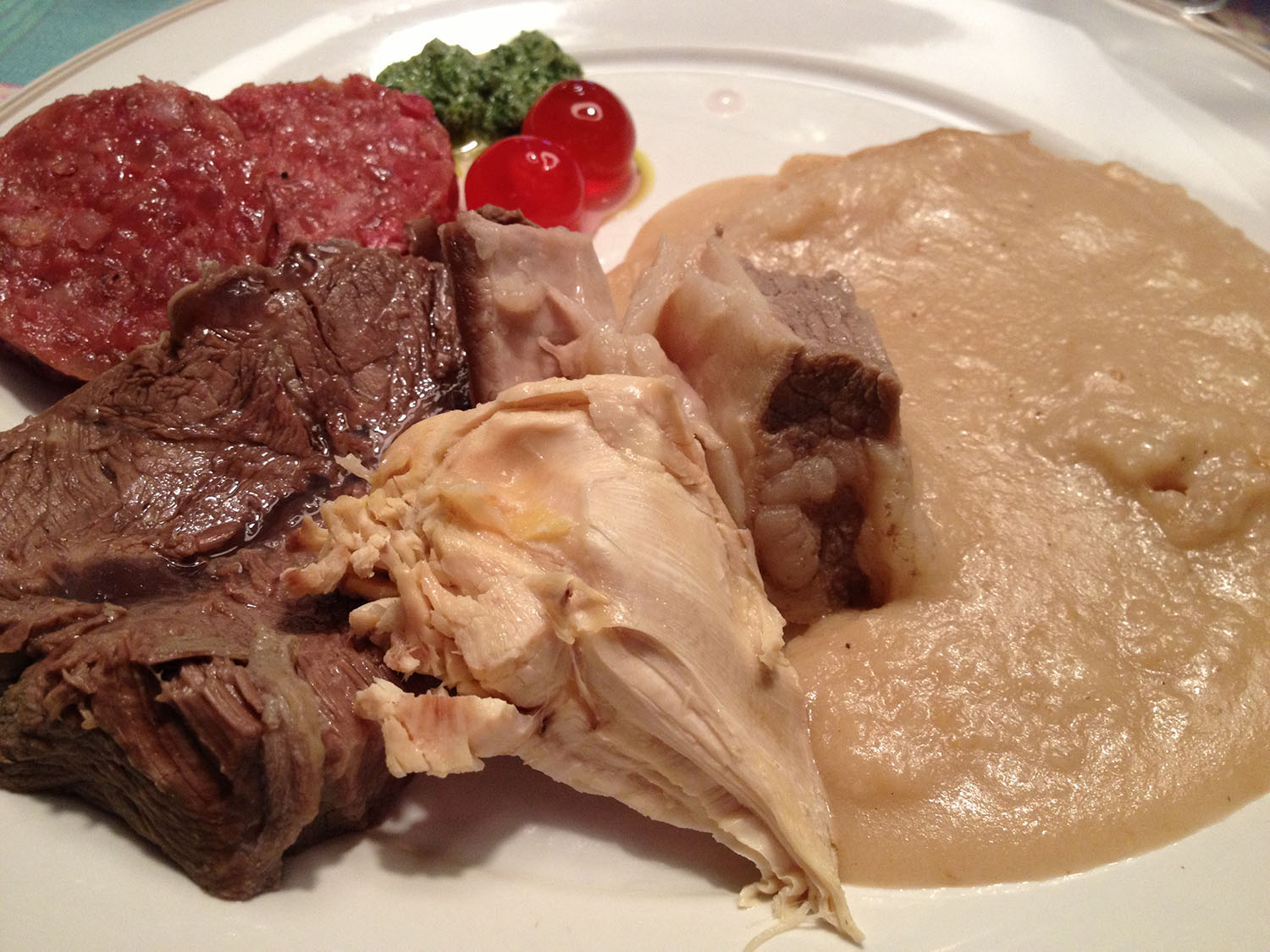Typical products
The Bìgoli
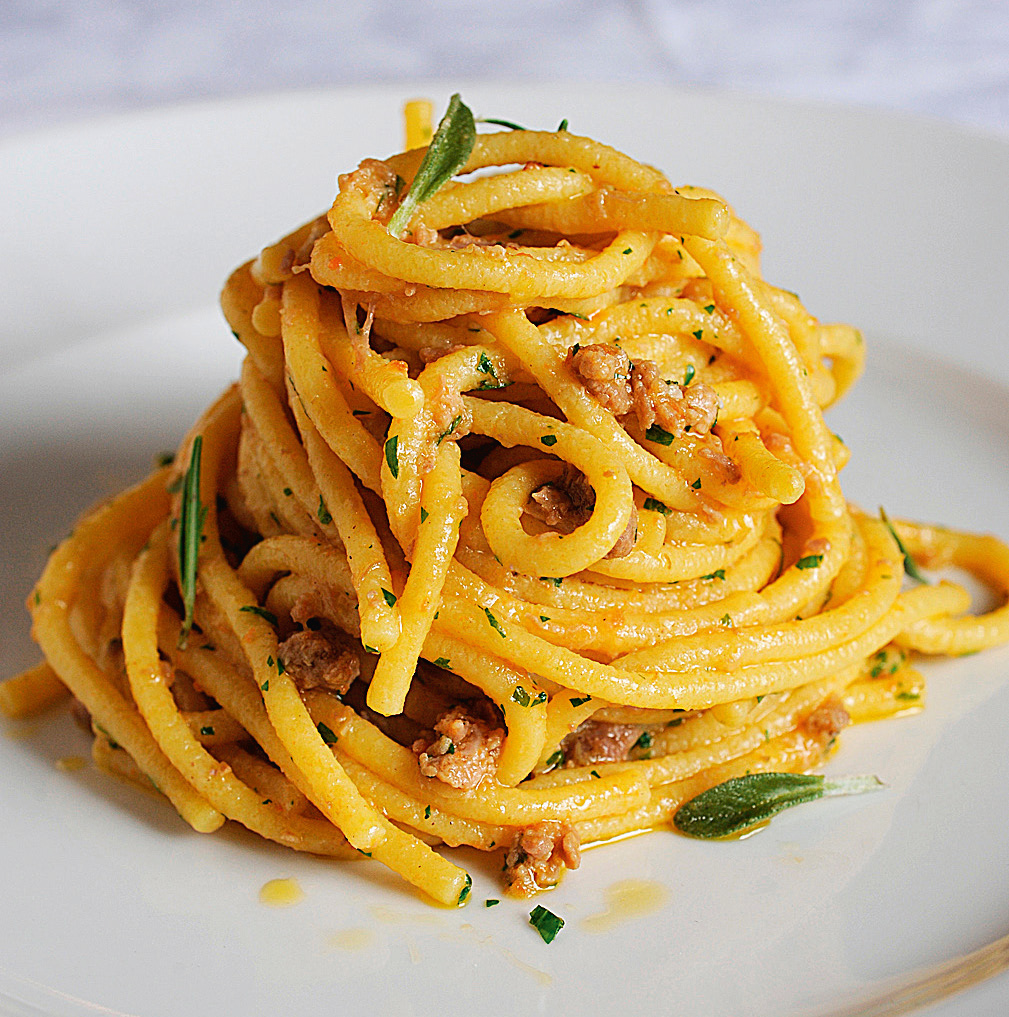
- They are part of the gastronomic identity of Veneto and are undoubtedly the best known type of pasta among the other ones typical of this region;
- Their shape resembles a large spaghetti, although they are much thicker;
- There are two hypotheses on the origin of the name: according to the first and most widely accepted hypothesis, the word derives from the dialectal term 'bigàt', 'caterpillar'; the second hypothesis, on the other hand, maintains that the word derives from the Latin 'bombyx', 'worm' → both hypotheses are based on the elongated form of the bigolo;
- The presence of bìgoli on Veronese tables is documented from 1636 onwards: in that year, the ‘Arte dei biavaroli’ was founded→ the statutes of the Arte dei biavaroli established the exclusive right of the Arte, in addition to the sale of flour, grains, and pulses to make pasta in its various forms 'bìgoli, paparelle, lasagne, macaroni di Puglia and every other similar kind of pasta';
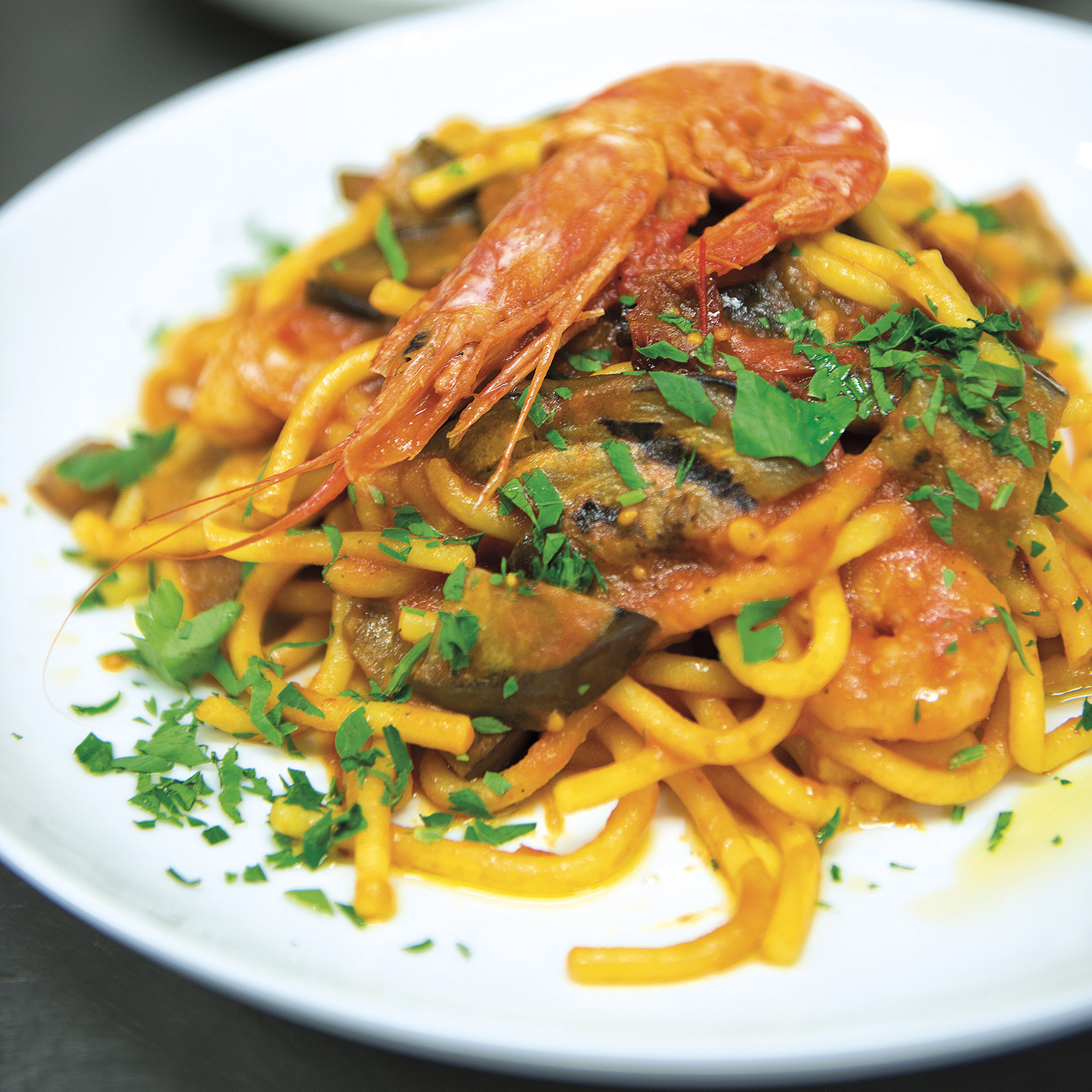
- Bìgoli are also mentioned in the shopping lists of both Veronese families and religious communities → some notes in these registers highlight the occasions when bìgoli were consumed: at the nuns' table bìgoli could replace the traditional gnocchi (called maccheroni) at carnival time, called "bìgoi del venerdì casolaro" → in addition to the specification regarding the occasion of consumption, the notes also mention the
- Bìgoli and gnocchi precisely define the Veronese tradition of the time, although there is some doubt as to which type of pasta was created first;
- The first explicit identification of the 'veronesity' of bìgoli is found in a sonnet in praise of the city of Mantua written by Giammaria Galeotti (1699-1744), published in 1782: 'Par fin ha un frutto che/Come famosa fa Verona i bigoli/Singolar ci fa il lago, e son i trigoli';
- The identity bond between this type of pasta and its homeland seems to have been consolidated in the mid-18th century: Giuseppe Pichi, in 'Traduzion dal toscano in lingua veneziana de Bertoldo Bertoldin e Cacesenno' (printed in Padua in 1747), refers to bìgoli as a distinctive and qualifying element of Verona in his concise description of the city:
Verona è una bellissima cittàe,
Verona is a beautiful city,
Che coline, e pianure la circonda,
What hills and plains surround it,
A chi la vede la ghè piase assae,
Those who see it like it,
Con l’Adese, che va sempre e segonda;
With the Adese, which always goes and follows;
Ghè l'Arena with other antighitàe,
There are the Arena and other ancient monuments,
E par, che a un’altra Roma corisponda,
And it seems to correspond to another Rome,
Ghè ben clima, e cortesi abitadori
There are good weather and courteous inhabitants
Dei bigoli famosi destrutori
Inventors of the famous bigoli
- The traditional recipe included only three ingredients: water, wheat, and salt → with time, however, it was enriched to include eggs;
- With regard to the typical shape of bigoli, a distinction must be made between two historical moments: before the press and after it → in Verona, before the press, the so-called 'ferro da maccheroni' was used, i.e. a metal cylinder similar to a small rolling pin, carved with grooves that acted as parallel 'knives' → at the time bigoli had therefore a squarer shape than bigoli at the press;
- Later followed the use of the bigolaro, a press with a bronze die invented by Bartolomio Veronese: a master pasta maker from Padua known as 'Abbondanza', who was granted a patent by the city council in 1604;
- In the best-known traditional recipe books, the seasoning par excellence of bìgoli is anchovy sauce: this dish was eaten on lean days, such as Christmas Eve, Good Friday, and Ash Wednesday → according to (Vicenza) tradition, bìgoli can be seasoned with duck ragù.
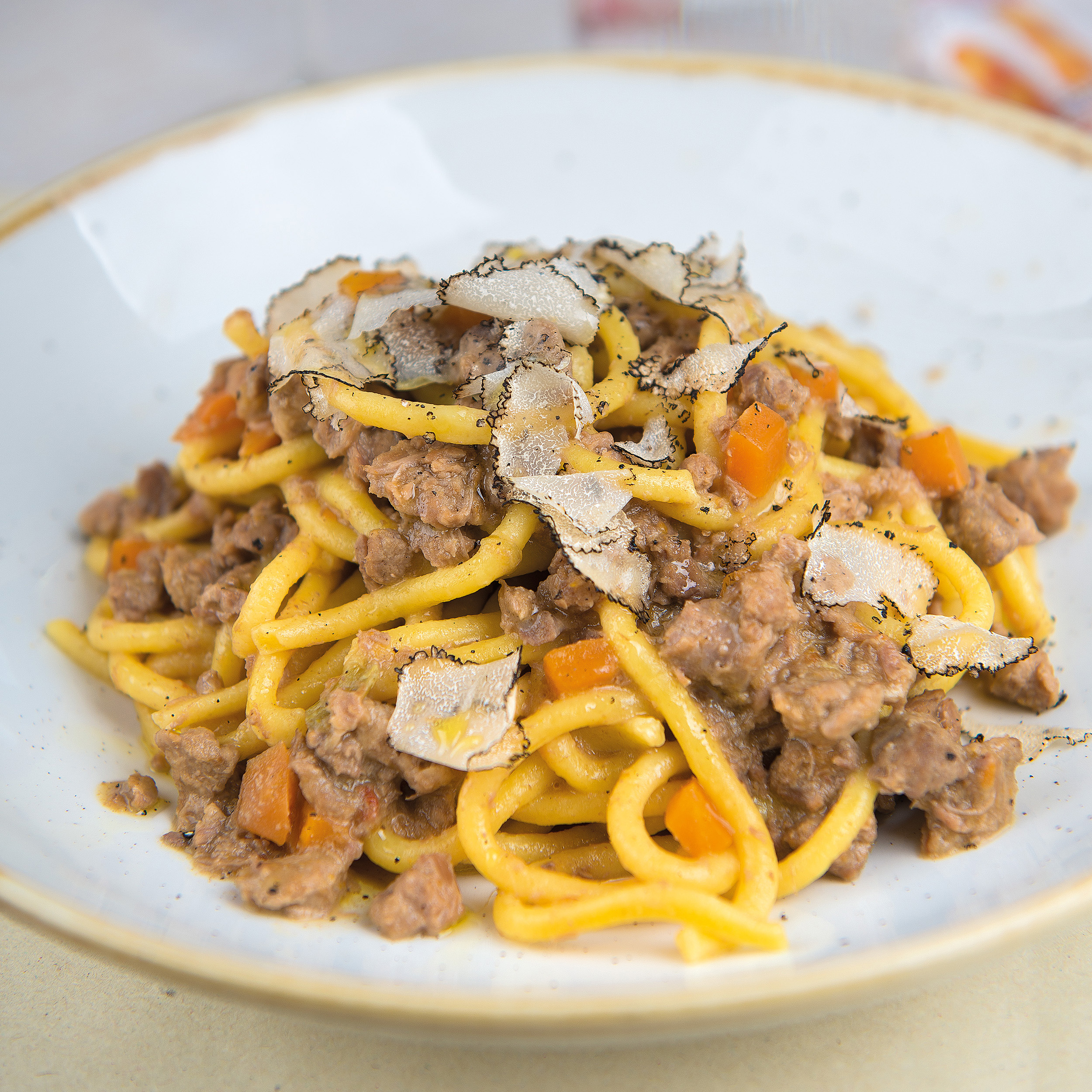
Gnocchi

- The history of gnocchi is inextricably linked to that of the Verona carnival;
- Gnoccolare Friday is a typical festivity of the Veronese people, which some even trace back to the time of Ezzelino da Romano → others believe, however, that 'il Gnocco' dates back to the time of Verona's dedication to Venice;
- In 1405, when the Veronese ambassadors returned from Venice, they removed the ancient war cart from the church of S. Zeno: they mounted it, holding the banner of the Venetian Lion in their hands, and moved towards Piazza delle Erbe;
- It is said that a horrible famine raged that year, and that they threw bread from the cart to the people, who hailed it 'the cart of plenty';
- In 1531, Tommaso da Vico, a well-deserving citizen, endeavoured to convert the bacchanal into a public charity → in that year, due to a severe famine, the price of flour rose so much that the poor people, particularly in the popular quarter of San Zeno, risked starvation → Vico got to know the neediest population of S. Zeno and managed to collect enough money to guarantee the underprivileged the flour needed for gnocchi, a dish that at that time represented the basis of the people's diet → flour was then 'converted', and this custom gave its name to the Friday of carnival, or 'Venerdì gnocolar' → in his will, Da Vico left a large sum of money so that, every year, on Shrove Friday, gnocchi and wine would have been distributed in quantity to the inhabitants → the most famous mask of the Veronese carnival was born in memory of this episode: Papà de Gnoco, a pot-bellied and bearded king who, instead of a sceptre, holds a huge fork topped with a large dumpling.
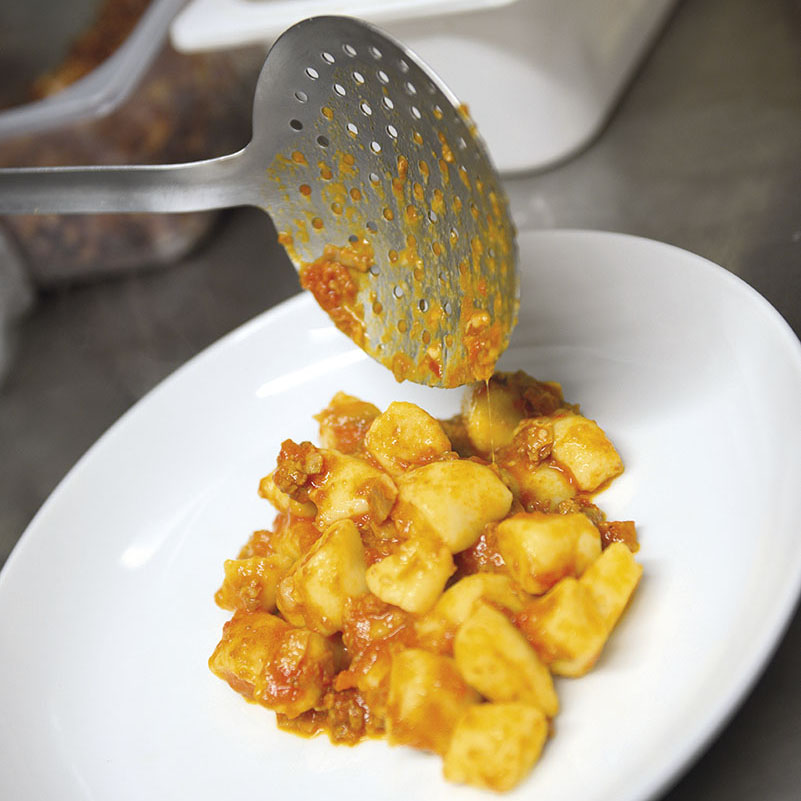
Legend
It is said that a commoner from San Zeno, known as Papà del Gnoco, riding a donkey followed by the town's ragamuffins, made his way to the Palazzo della Prefettura in the name of the 'Sanzenati': there he invited the town and government authorities to attend the big celebration. This gesture changed the face of the procession: there were not only poor people, but also noble multitudes of lords and knights.
The long procession arranged itself around the large pavilion, especially erected in Piazza Pozza in San Zeno, where Papà del Gnoco went up first, to do the honours. Steaming dumplings were served to the illustrious guests (and more), and among them were government representatives.
Gnocchi have a very old tradition → originally the recipe was 'poor', with only two ingredients: flour and water → potatoes were added later: between 1774 and 1856, the typical Veronese product had already undergone the 'potato revolution' → the rise of industrial capitalism favoured the substitution of flour with potatoes, considered a valid and economical substitute → changed in substance, 'the gnocco had become for the people a sort of residue of Pareto, that is, a feeling, the intuition of a shape modelled by the grater'.
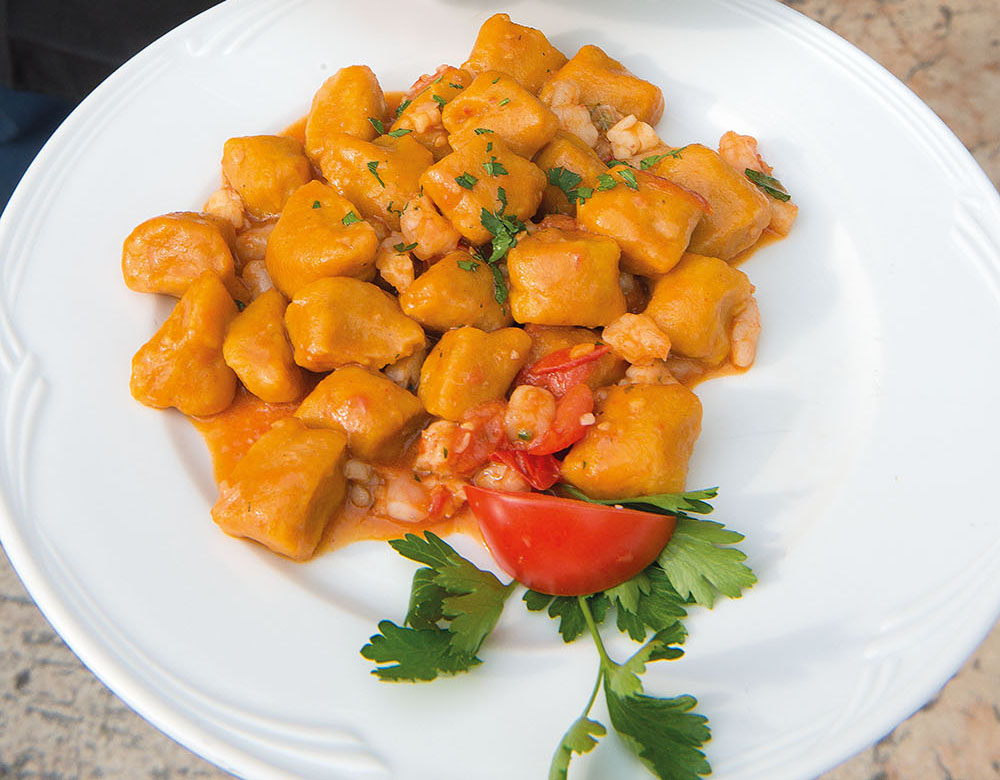
La Pastissada de caval

- It is a typical dish of the Veronese gastronomic tradition and is conventionally dated back to 30 September 489 AD.: On that date, a bloody battle fought near the city between Theodoric and Odoacer occured;
- The battle was won by Theodoric and the episode is still visible today: it is sculpted on the façade of the Church of San Zeno.
Legend
It is said that on the occasion of the battle fought between Theodoric and Odoacer, one of the most famous dishes of the Veronese gastronomic tradition was born: Pastissada de caval, or horse meat stew.
The battle took place at the gates of Verona in 489. After the bloody fighting, hundreds of horses were left on the field, victims of the clash. It is said that the starving population asked the victor - Theodoric - for permission to eat them. The new ruler gave the population permission to use the horses' meat and to take barrels of Bardolino wine.
Given the great abundance and the lack of tools to preserve the meat, they tried to prolong its shelf life by soaking it in a mixture of wine and spices. The subsequent cooking of the meat gave rise to the famous Veronese dish.
- Pastissada' consists of a horse meat stew: the horse meat is cooked in plenty of wine and spices for 36/48 hours;
- However, there has always been a traditional - even popular - aversion of the Veronese towards horse meat: it was only eaten in times of famine;
- Attempts to promote the food use of horse meat date back to the last decades of the Austrian government: the sale of meat was liberalised and slaughterhouses were set up;
- In order to overcome this hostility towards horse meat, preparations had to be made that concealed the origin of this meat as much as possible through long cooking and reduction to small pieces, if not shreds.
Tastasal

- The word 'tastasal' belongs to the Venetian dialect and literally means 'testing the salt';
- The meaning of this word is to be necessarily associated with the gastronomic sphere and - specifically - with the world of meat → one 'tests the salt' inside the meat;
- In past centuries, in fact, housewives of the lower Veronese area used to prepare 'Risotto col Tastasal' to check the savouriness inside the cured meats paste before stuffing them;
- The word 'Tastasal' therefore derives from the operation of controlling the salting of pork meat, which is used to make soppressata, salami, and Veronese stortina;
- The meat was then seasoned with some herbs, such as rosemary, pepper, and cinnamon;
Polenta
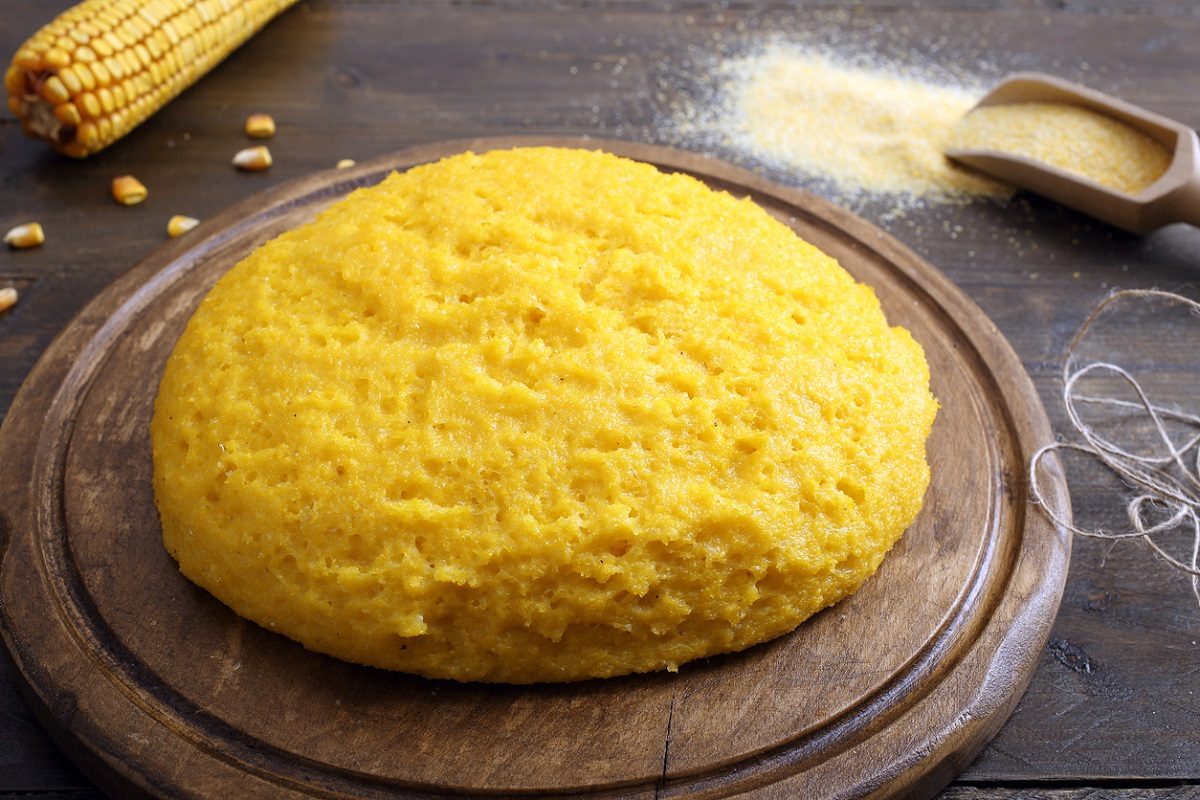
- The corn arrived in Europe, specifically in Spain, perhaps on the first voyage back from the Americas; it was certainly part of the cargo on the second return journey in 1494;
- The spread in the Old Continent was rather slow, and for a long time the corn was only a botanical curiosity that did not attract much agricultural interest;
- The name corn (or maize) derives from the word 'mahiz' by which the natives encountered by Christopher Columbus called this plant → the name maize, on the other hand, originated in the 16th century: at that time, the word 'Turkish' had the meaning of 'foreigner';
- In the Old Continent, however, the fortune of the corn is linked to the Venetian Republic and its decline as a maritime and commercial power → then, the Serenissima became more interested in the mainland, expanding into the neighbouring provinces: it was in this climate that the corn began to be thought of as a new crop;
- The first report on its cultivation dates back to 1554 and relates to crops in the Polesine and lower Veronese;
- Polenta has very ancient origins, people were writing about this product already in Roman times → the term 'polenta' derives from the Latin 'puls', and at that time did not indicate a food made from corn, but from spelt;
- The corn was ground and mixed with water and salt for the first time - in Italy - in 1554, in the Polesine area; a soft batter was thus obtained;
- In the territories where the corn became more widespread, polenta also became particularly popular; this was significantly the case in Veneto, Lombardy, and Trentino→ in these regions, and primarily in Veneto, polenta became the queen of the table;
- The gastronomic history of Veneto is strongly linked to polenta, an essential dish in the tradition of this region → it is the homeland of Marano corn: it is for this reason that when we speak of polenta, we mean the yellow one;
- Until the second post war period, in the Treviso, Venetian and Polesine areas, people mainly ate white polenta → this type of polenta, considered more valuable, divided the plains and the hills from the mountains: in the mountains, in fact, they mainly ate yellow polenta, which was more rustic, because it was considered better suited to the agronomic and soil conditions;
- The corn used for the most sought-after and delicate white polenta is Biancoperla;
- The massive spread of this kind of corn dates back to the second half of the 19th century and it is also due to its greater shelf life;
- White polenta, more delicate and tastier than the yellow one, is also known as ' polenta di Treviso'. In the countryside, it was eaten with cold milk, thus obtaining a kind of semolina called 'patugoi'/'pastarei' (in the hills and foothills) and 'tacoi' (in the plains);
- Traditionally, this kind of polenta is combined with poor fish dishes from the river and lagoon: marson, schie, moeche, masenete, shrimps, and codfish → in hilly areas, on the other hand, two dishes are an integral part of the cultural identity: polenta e speo and polenta e osei.
Monte Veronese
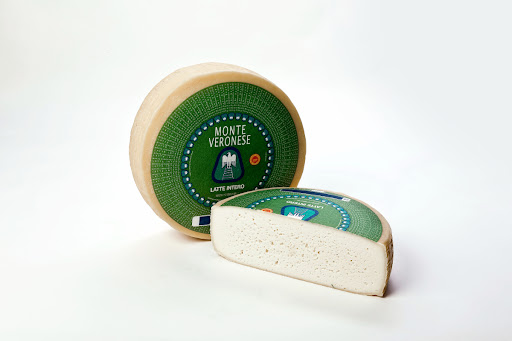
Monte Veronese cheese has been present in the Veronese territory since the year 1000 → in the way we know it, however, it dates back to two centuries later when the Cimbri (a group of settlers of German origin from the Asiago Plateau) settled in Lessinia → the Cimbri brought to this territory their manual skills and techniques for processing milk and rennet and obtained this cheese that has been enormously popular over the centuries;
- The name of this cheese has undergone many changes over the time and derives from the production technique of using milk from two milkings;
- The dialect expression used by farmers to define it was, in fact, 'il latte delle do monte' → the evolution of this expression gave rise to the name 'Monte' accompanied by the adjective 'Veronese' indicating the production area;
- Monte Veronese is a typical cheese from the Veneto region and has been awarded the PDO certification;
- The milk comes from the northern part of the province of Verona: the processing and maturing phases also take place here → this is a predominantly mountainous area: besides fertile pastures, the area boasts an ancient tradition in cattle breeding, mountain pasture, and production of milk and cheese → this area coincides (broadly speaking) with Lessinia, Monte Baldo, and the Veronese pre-Alpine hills: cheese production has forged the identity of this area since before the year 1000 → at that time, it was a precious commodity for exchange (replacing currency);
- There are two types of this cheese: Monte Veronese whole milk and Monte Veronese d'allevo;
- Monte Veronese whole milk is produced with whole milk from one or two consecutive milkings; its taste, delicate and pleasant, recalls freshly milked milk, cream, and fresh butter;
- Monte Veronese d'allevo, on the other hand, is produced with partially skimmed milk from one or two consecutive milkings → compared to the former, it has a stronger, more savoury flavour typical of mature cheese. The taste recalls that of ripe butter and hazelnuts, and tend to become a little spicy with ripening.
Tartufo della Lessinia (Lessinia Truffle)
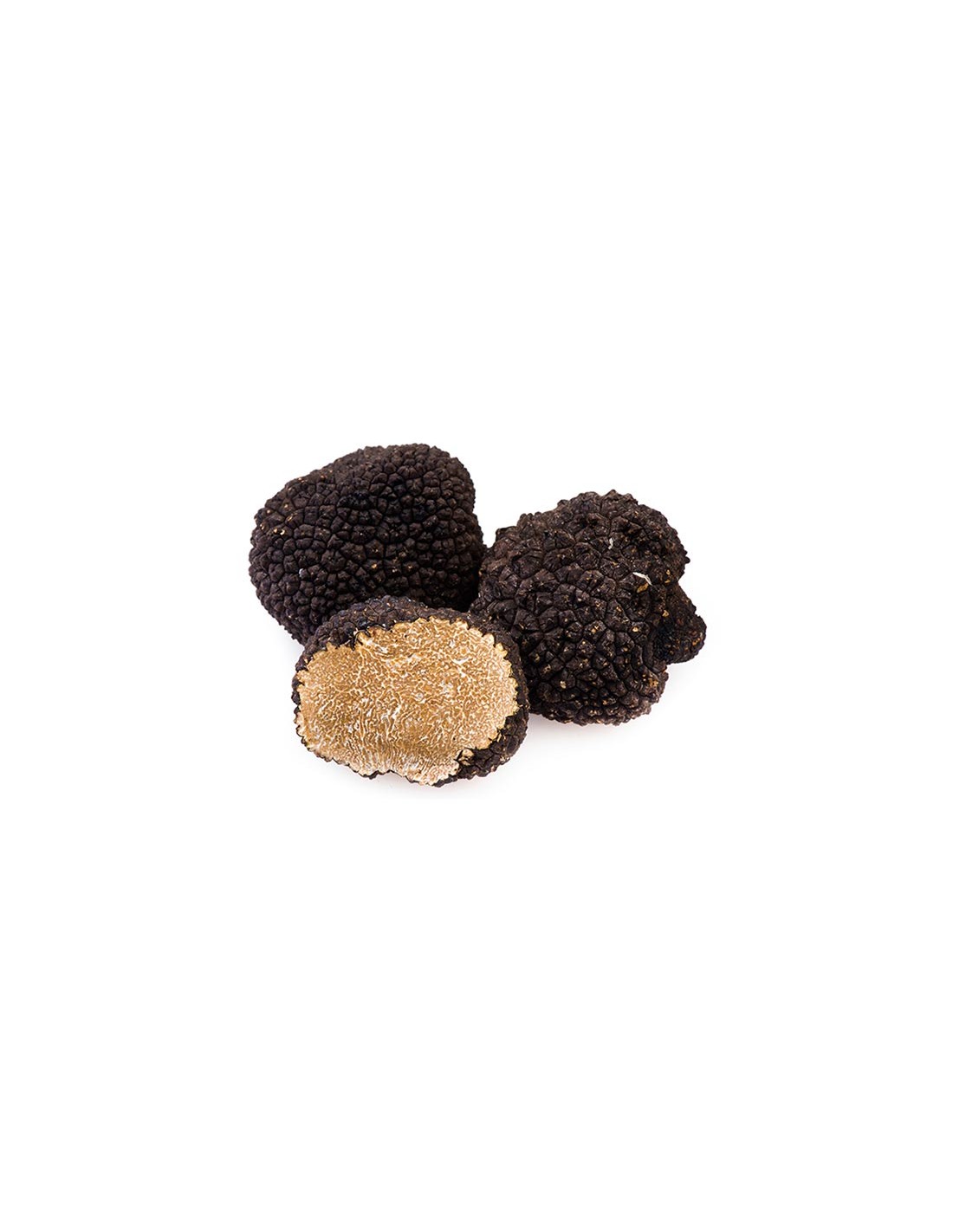
- Truffles were present in the diets of the ancients since the time of the Sumerian people;
- Truffles have been appreciated by gourmets in every age, starting with the ancient Greeks; the Romans were fond of truffle, and Apicius and Juvenal sang their praises and adapted methods for cooking them;
- The prestige of this mushroom has grown exponentially in modern times → it seems that during his military campaign in Verona before the Battle of Arcole, Napoleon took an interest in Lessinia truffles;
- In his 'Monograph of the Province of Verona', the Royal Prefect Sormani Moretti talks about truffles in the Verona area;
- The 'Black Truffle of Verona', Tuber melanosprium, comes from natural truffle beds, has a black, roundish tubercle with warty irregularities, and emanates a strong smell;
- The territories involved in its production are: Baldo and Lessinia communities (Verona province).
La Pearà
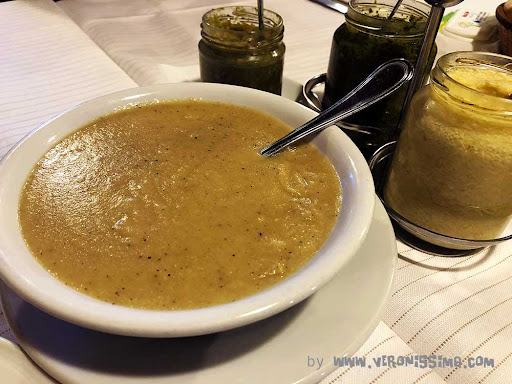
Pearà is a sauce made from marrow, breadcrumbs, pepper, and broth - sometimes also with grated cheese – which is cooked for a long time in an earthenware pot and used to accompany boiled meat. According to the Veronese legend, it was invented by the cook of Alboino's court so that Rosmunda would regain her appetite. The name pearà derives from Piperata, which means pepper, and was first read in a parchment from 1141.
The specific use in the Veronese area of piperata as a sauce to accompany boiled meat has been clear since the 15th century: for instance, in 1449 the Convivium of Fumane provided its members with an annual lunch with paparèle in broth and boiled meat accompanied by piperata.
Much more recent is the Veronese specificity of pearà, where the bread is sweetened with marrow. This transition occurred between the 17th and the 18th century, due to the influence of the French culinary model.
